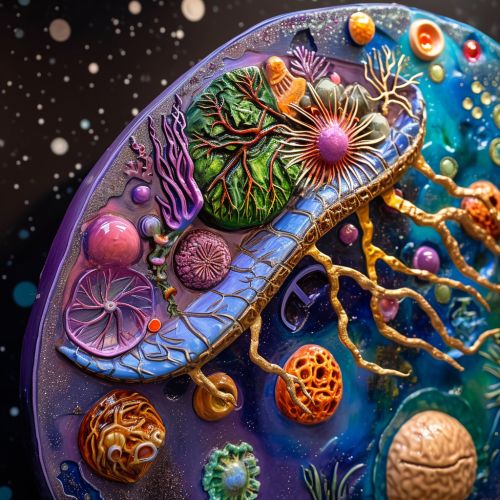Eukaryota
Introduction
Eukaryota, also known as Eukaryotes, are organisms whose cells have a nucleus enclosed within a nuclear envelope, which contains the genetic material. This distinct feature separates them from their counterpart prokaryotic organisms, where the genetic material is not separated from the rest of the cell. The term "Eukaryota" is derived from the Greek words 'eu', meaning 'well' or 'true', and 'karyon', meaning 'kernel' or 'nucleus'.


Classification
Eukaryotes are a highly diverse group of organisms, classified into four major kingdoms: Animal Kingdom, Plant Kingdom, Fungi Kingdom, and Protist Kingdom. This classification is based on their cellular structures and the modes of their nutrition.
Cell Structure
Eukaryotic cells are typically larger than prokaryotic cells and have a variety of membrane-bound organelles such as the endoplasmic reticulum, Golgi body, and mitochondria. They also possess a cytoskeleton for maintaining cell shape and facilitating cellular division or cytokinesis.
Nucleus
The nucleus is the most conspicuous organelle found in a eukaryotic cell. It houses the cell's chromosomes and is the place where almost all DNA replication and RNA synthesis occur.
Mitochondria
Mitochondria are often described as the powerhouses of the cell because they generate most of the cell's supply of adenosine triphosphate (ATP), used as a source of chemical energy.
Endoplasmic Reticulum
The endoplasmic reticulum (ER) is a type of organelle in the cells of eukaryotic organisms that forms an interconnected network of flattened, membrane-enclosed sacs or tubes known as cisternae.
Golgi Apparatus
The Golgi apparatus is an organelle found in most eukaryotic cells. It was identified in 1897 by the Italian scientist Camillo Golgi and was named after him.
Reproduction
Eukaryotes can reproduce both sexually and asexually. The method of sexual reproduction in eukaryotes is considerably more complex than binary fission, the method of asexual reproduction in prokaryotes.
Evolution
The origin of the eukaryotic cell is a milestone in the evolution of life, since they include all complex cells and almost all multicellular organisms. The timing of this series of events is hard to determine; Knoll suggests they developed approximately 1.6–2.1 billion years ago.
